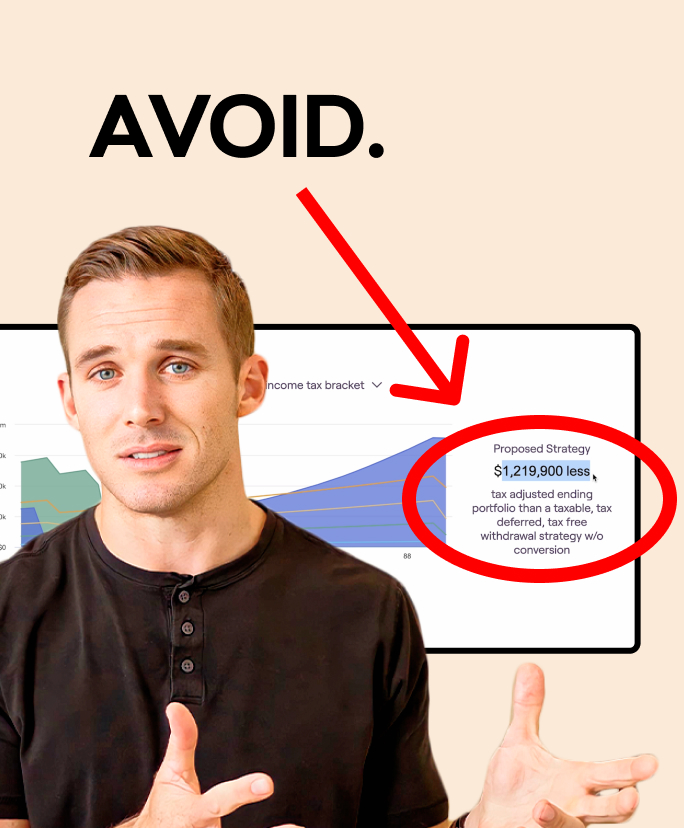Have you ever asked your financial advisor how much you pay them each year? I’m curious what they said.
Did they say, “I just get a small kickback from the funds in your account”?
Or maybe they told you that they get a percentage of what they manage for you, but left the total cost pretty vague?
Don’t you think that if there’s anyone who should know the cost of your portfolio, it’s you?
If you have a financial advisor and aren’t sure exactly how much you’re paying them, then I’m here to tell you the different ways in which advisors get compensated.
Let’s breakdown the two main ways in which an advisor gets paid:
#1 Product companies pay them.
If your advisor receives payment from the investment or product that he or she sells you, then they are receiving a commission. Rather than your advisor receiving compensation from you, they get paid by the fund company that they’re recommending for you.
This might not sound so bad but consider this – let’s assume you’re an advisor and a prospect walks into your office.
After getting to know the prospect you find that there’s a couple different investments that might be suitable for them.
Here’s the difference – You might receive a 5% commission if you put the prospect in one type of investment, or you might receive a 7% commission if you put the prospect in the “sort of similar” other investment.
Tell me what you would do in this scenario?
The problems that this scenario creates are obvious. The real problem is this isn’t just a hypothetical scenario. This happens every day in advisor offices around the country.
Bottom line – commissions create conflicts of interest and can be harmful to the investor!
If you’ve paid any attention at all to recent happenings in the financial planning world then chances are good you’ve heard the term “fiduciary”. The fiduciary standard is big right now and it mandates than an advisor is legally bound to providing the highest standard of care and must always put his or her client’s interests above their own.
In other words – it seeks to prevent advisors making investment decisions based on the payment they will receive from the different investment companies.
That sounds good, right? So how does an advisor act as a fiduciary and still get paid?
#2 You pay them.
This fee can come in different forms:
You might pay a financial planning fee. A financial planning fee is an upfront charge that you pay your advisor to create a financial plan for you.
This financial plan can cover topics such as retirement planning, college planning, insurance planning, and more.
You are hiring the advisor to take a few hours of their time to understand your goals and create a plan to show you how to accomplish those goals.
You might also pay a monthly fee to work with this advisor on an ongoing basis to help you stay on track with your plan. Then when your circumstances or goals change, your advisor is there to help you update your plan.
The most common “fee-based” compensation method advisors are using today is charging a fee based on the investments that they are managing for you.
The advisor will typically charge a percentage of what he or she is managing for you.
Say, for example, this fee is 1%.
If you have a $250,000 portfolio and you pay your advisor 1% then you are paying them $2,500 per year ($250,000 x 1%). I typically see fees range from 0.6% to 1.5%, although they vary.
So what’s the difference between commissions and fees if at the end of the day the advisor is getting paid either way?
The difference between paying commissions and paying fees is in the incentives that they create!
No matter how nice of a person he or she is, an advisor that receives commissions is inherently incentivized to recommend products that pay the highest commissions.
An advisor that charges a financial planning fee or an investment management fee is incentivized to do a good job for you and keep you happy.
Why? Because they only continue to receive their fee if you stick around and keep working with them!
But do you know how much that fee is? And do you know what that percentage works out to in dollar terms?
A 1.25% advisory fee might not sound like a lot. But what does that represent on a $1,000,000 account?
It comes out to $12,500 per year.
It could be that your advisor is providing that much value to you and your plan, and I certainly hope that they are. I just hope that they clearly articulated the costs to you when you started working together!
If you don’t know what you’re paying your advisor then it never hurts to ask. They should be able to send you a fee schedule (you can see ours in the FAQ on our Process page).
Think it’s easy to tell the difference now?
Think again.
Now you have to beware of the proverbial wolf in sheep’s clothing!
Most advisors today actually operate as what’s called a “fee-based” advisor.
Not to be fooled with a “fee-only” fiduciary advisor, a fee-based advisor can charge clients under either the commission structure or under the fee structure.
Depending on the client and depending on the situation, a fee-based advisor can choose whichever payment structure he or she would like.
So don’t assume that because your advisor says they’re fee-based means they legally must put your best interests ahead of their own.
How can you tell if your advisor can charge commissions on your investments?
Ask if they are registered with a “broker-dealer”. If the answer is yes, then your advisor is not operating as a fiduciary to all of his or her clients.
True fiduciaries and fee-only advisors do not receive ANY commissions for the advice that they give and they do not have an affiliation with a broker-dealer.
Remember Billy Mays? What was he always famous for saying?
But wait there’s more!
Just because you know how your advisor gets paid doesn’t mean that you know the whole story. Or, In other words, “but wait there’s more!”
On top of the fee that you pay your advisor, here are the other costs and expenses involved in investing your money.
(Note: these costs exist whether you work with an advisor or not, but your advisor should help you keep these costs as low as possible).
Trading costs – Anytime you buy or sell a stock, mutual fund, or Exchange Traded Fund (ETF) you might be paying a trading cost. These costs can range from $10/trade up to $50/trade.
The trading costs on your funds will depend on where you do hold your investments (i.e. TD Ameritrade, Fidelity, Charles Schwab to name a few). These companies, known as custodians, make their money through trading costs so it’s important that you work with a custodian that keeps costs low.
Internal expense of funds. Pay attention to this one!
Unless you enjoy reading through pages and pages prospectus materials (aka the legalese that outlines the fees, objectives, and performance history of mutual funds and ETFs), then you probably don’t know the actual internal cost of the funds that you’re invested in.
What’s an internal cost? It’s the cost associated with the management and operation of the mutual funds or ETFs that you invest in.
All mutual funds and ETFs have an internal expense. But how high is too high?
There’s no hard and fast answer to this question, but if the internal cost of your funds is anywhere near 1% or higher then I hope you have a good long conversation with your advisor about the reason for this.
With good mutual fund and ETF managers offering funds with internal expenses between 0.05% and 0.40% it’s hard to justify paying a whole lot more than that.
Call me biased, but I believe wholeheartedly in the value of a good financial planner. I just think that you should be aware of how much you’re paying them.
If you want to learn more about how your current advisor is getting paid, I’d be happy to show you. Feel free to reach out to learn more.


